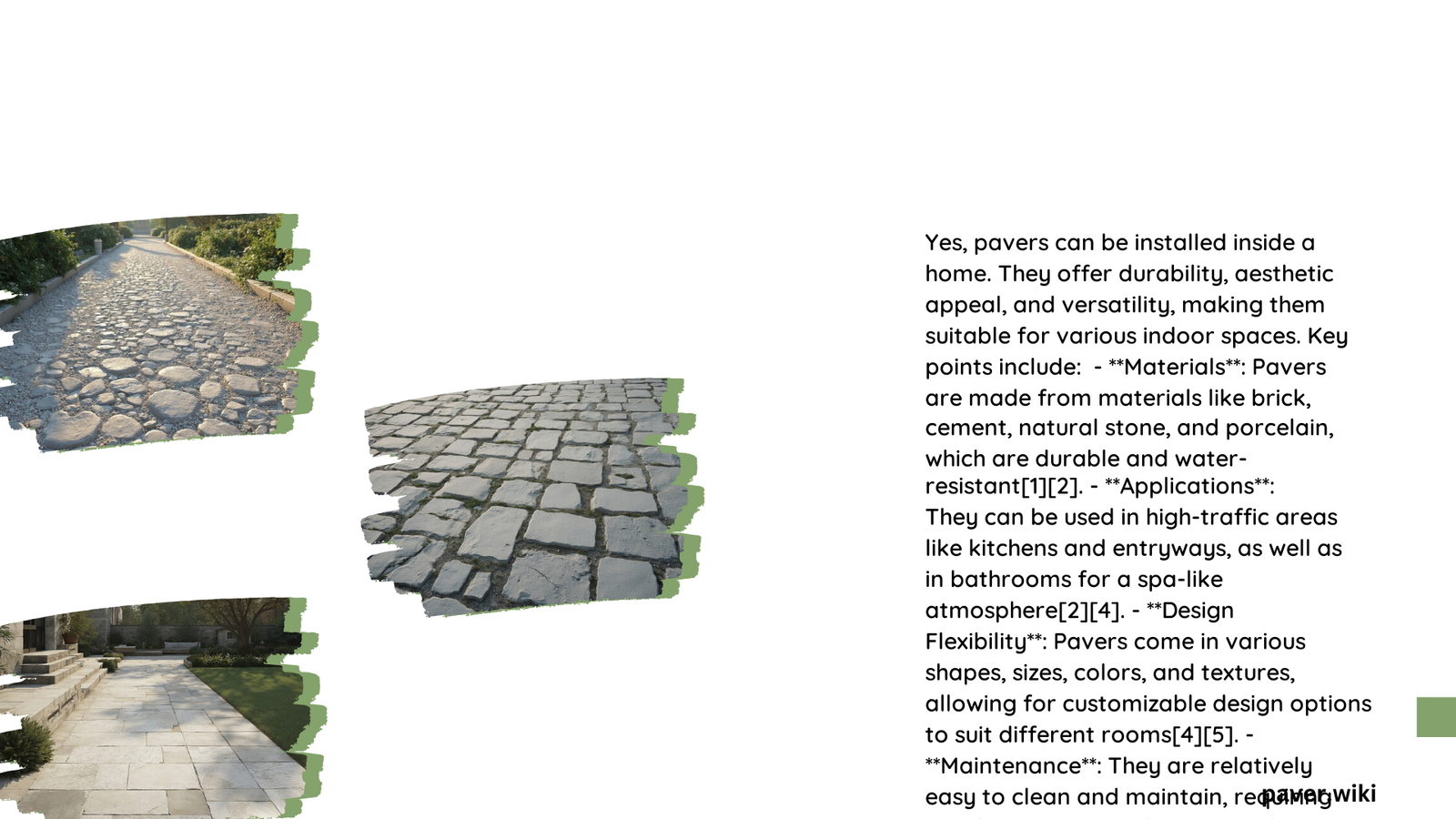Pavers can indeed be installed inside a home, offering a unique and durable flooring option. This versatile material, traditionally used for outdoor spaces, has gained popularity for interior applications due to its durability, aesthetic appeal, and thermal properties. Indoor paver installation requires specific considerations, including proper subfloor preparation, moisture control, and load-bearing capacity assessment. With the right approach, pavers can transform interior spaces, providing a distinctive look and long-lasting performance.
What Are the Specific Requirements for Installing Pavers Inside a Home?
Installing pavers inside a home requires careful planning and preparation. Here are the key requirements:
Subfloor Preparation
- A poured concrete slab pad, at least 3 inches thick, is essential for a stable base.
- The subfloor must be level and free of cracks or unevenness.
- Use a self-leveling compound if necessary to achieve a smooth surface.
Moisture Control
- While not always required, a moisture barrier can be beneficial in moisture-prone areas like bathrooms and kitchens.
- Proper sealing of the concrete subfloor is crucial to prevent moisture issues.
Load-Bearing Capacity
- Ensure the subfloor and foundation can support the combined weight of pavers, mortar, and anticipated loads (e.g., furniture).
- A 3-inch thick concrete slab is typically sufficient for residential applications.
What Are the Benefits of Using Pavers Indoors?

Indoor pavers offer several advantages:
- Thermal Regulation: Concrete pavers help maintain stable indoor temperatures due to their thermal mass properties.
- Durability: Highly resistant to wear and tear, especially when using architectural-grade concrete pavers.
- Aesthetic Versatility: Wide range of colors, shapes, and patterns available to match various interior design styles.
- Unique Look: Provides a distinctive appearance that sets your home apart.
- Low Maintenance: With proper sealing, pavers are easy to clean and maintain.
Which Types of Pavers Are Suitable for Indoor Use?
Several types of pavers are suitable for indoor installation:
| Paver Type | Characteristics | Best For |
|---|---|---|
| Concrete Pavers | Durable, versatile, various colors and shapes | Most indoor areas |
| Porcelain Pavers | Moisture and stain-resistant | Kitchens, bathrooms |
| Natural Stone Pavers | Luxurious look, highly durable | High-end interiors |
Key Considerations for Indoor Pavers:
- Slip Resistance: Choose pavers with textured or matte finishes for better traction.
- Thickness: Typically ranges from 1/2 to 3/4 inch.
- Color and Style: Select pavers that complement your interior design.
How to Maintain Indoor Pavers?
Proper maintenance is crucial for the longevity and appearance of indoor pavers:
- Regular Cleaning:
- Sweep or vacuum regularly to remove dirt and debris.
- Mop with a mild detergent solution as needed.
-
Avoid harsh chemicals or abrasive cleaners.
-
Sealing:
- Apply a clear, breathable, penetrating sealant.
- Reapply sealant every 2-5 years, depending on wear and tear.
-
Use products specifically designed for your paver type.
-
Stain Prevention:
- Clean spills immediately to prevent staining.
-
Use coasters under furniture legs to prevent scratches.
-
Periodic Inspection:
- Check for loose or damaged pavers.
- Inspect grout lines for wear or cracking.
What Are the Installation Steps for Indoor Pavers?
- Prepare the Subfloor:
- Ensure a level, clean concrete slab.
-
Repair any cracks or unevenness.
-
Use a notched trowel to spread a thin-set mortar or adhesive.
-
Lay the Pavers:
- Start from one corner and work your way out.
-
Use spacers for consistent gaps between pavers.
-
Cut Pavers as Needed:
-
Use a wet saw for precise cuts around obstacles or edges.
-
Allow Adhesive to Set:
-
Follow manufacturer’s instructions for drying time.
-
Apply Grout:
- Fill gaps between pavers with appropriate grout.
-
Clean excess grout from paver surfaces.
-
Seal the Pavers:
- Apply a suitable sealant after grout has fully cured.
What Are Common Challenges When Installing Pavers Indoors?
- Moisture Control:
- Ensure proper subfloor sealing to prevent moisture issues.
-
Consider using a moisture barrier in high-humidity areas.
-
Weight Considerations:
-
Verify that your floor structure can support the added weight of pavers.
-
Height Differences:
-
Plan for transitions between paver flooring and other floor types.
-
Temperature Fluctuations:
-
Allow for expansion and contraction in areas with significant temperature changes.
-
Noise:
- Be aware that paver flooring may increase sound reflection in a room.
By addressing these challenges and following proper installation techniques, you can successfully install pavers inside your home, creating a unique and durable flooring solution that enhances your interior design.
References:
1. Designing with Concrete Interior Pavers
2. How to Install Concrete Pavers
3. 10-Step Guide to Installing Pavers
